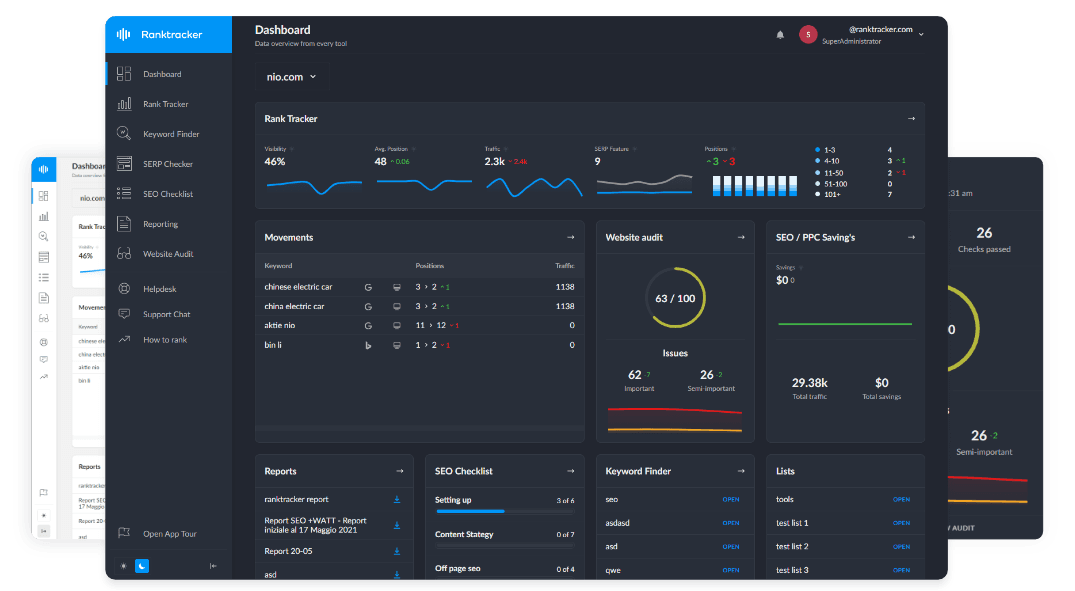Intro
There’s more to a product description than meets the eye. Not only does it let you rank high on listings, but it also helps you convert sales for your business. However, the key to e-commerce success starts with implementing SEO—search engine optimisation!
But what is SEO for listings, and how exactly does it work?
Don’t worry—This page shares with you some SEO tips for writing effective product descriptions. Read on to learn how to rank high and convert sales for your online business.
Why SEO Matters for Your Product Descriptions
Simply put, SEO is the process of optimising your website, creating relevant content, and building links. The goal is to rank high on a web page for online visibility and website traffic. However, SEO applies to business listings, specifically for your product descriptions.
It’s crucial to employ SEO management for the long-term success of your e-commerce business. SEO requires keyword research and integration, proper content formatting, as well as readability and clarity for your product descriptions. That said, here’s why it matters for your product listings:
- **SEO boosts your search rankings. **Your products will rank first in the listings for relevant searches.
- **SEO lets people find your products. **Your products will be discoverable right before the eyes of your target audiences.
- **SEO brings in the right shoppers. **You’ll be surprised to see potential customers visiting your page and showing interest in your products.
- **SEO builds trust and credibility. **SEO lets you optimise your content to establish authority and win the customers’ hearts.
- **SEO helps generate more leads. **SEO drives more and more prospects into your web page, making them want to buy your products.
- **SEO wins customers or converts sales. **SEO is the means to an end—that is, to make successful sales or gain loyal customers!
- **SEO keeps you ahead of the competition. **With SEO in place, you can beat other competitors in your niche, selling the same or similar products.
Learn how to write product descriptions that are SEO-optimised in the next section.
Top Tips for Writing SEO-Friendly Product Descriptions
As the name suggests, product descriptions are supposed to describe your goods or items. They essentially offer a product overview while showcasing key features and potential benefits. They also provide use cases, social proof, and calls to action (CTAs) to influence purchase decisions.
However, what better way to make your product descriptions work than to implement SEO for your e-commerce business?
The All-in-One Platform for Effective SEO
Behind every successful business is a strong SEO campaign. But with countless optimization tools and techniques out there to choose from, it can be hard to know where to start. Well, fear no more, cause I've got just the thing to help. Presenting the Ranktracker all-in-one platform for effective SEO
We have finally opened registration to Ranktracker absolutely free!
Create a free accountOr Sign in using your credentials
This marketing strategy entails incorporating relevant keywords, meta description, image alt text, and structured data. However, there’s more to these than you might think. That said, here’s how to write SEO-friendly product descriptions:
1. First things first, find the right keywords
Keyword research is a crucial part of the overall SEO equation. Find relevant words or phrases using SEO tools, such as Google Keyword Planner, Ahrefs, and SEMrush. However, ensure they match the buyer’s intent—what your target customers are looking for.
Focus on primary keywords reflective of your product name and industry/niche, such as “custom t-shirts” if you’re running an online design and printing business. Also, include long-tail keywords like “high-quality personalised t-shirts with fast shipping.” Finally, add these phrases to your title, headers, and product descriptions for proper keyword placement.
2. Make it easy for people (and Google) to read
There’s no denying the rise of AI-generated content for product listings. However, take ample time to structure your content for both: Algorithm bots and potential buyers. Content format for product descriptions is key to achieving better crawlability (for SEO ranking) and readability (for the target audiences).
Now, how do you go about doing that? Your content format should have H1, H2, H3, and bullet points. Start with a hook sentence highlighting your unique selling point (USP). Then, write two to three paragraphs about the potential benefits and include bullet lists for key features and specifications. Lastly, end your product description with a CTA.
3. Talk to your customer—not at them
The most critical step is to write compelling, customer-focused content. This means showcasing not only your product features but the value they bring to your potential customers. In other words, focus not on what your products have but on what your target market needs the way you promote your offerings in your customer newsletter.
First, use persuasive language that appeals to the buyers’ thoughts and emotions. Then, convince your prospects with social proof, such as online reviews and customer testimonials. Finally, the tone of your product description should match your brand voice—one that’s professional yet casual and fun. In short, talk to your customers!
4. Keep it short, simple (and sweet)
It’s vital to understand the role of content quality in SEO rankings and sales conversions. When it comes to product descriptions, prioritise readability and clarity. You don’t want to make your content hard for customers to read and understand. So, what better way to avoid it than to K.I.S.S.S.?
For one, use short sentences and plain language for easier comprehension. Make your content scannable and skimmable with headings, subheadings, lists, and white space for better readability. Lastly, ensure your product description is ‘sweet’ with palatable words and phrases to digest for creativity.
5. Stay consistent with a little help from—automation
It’s important to maintain consistency across all product descriptions in all your listings. You can leverage marketing automation to streamline your SEO workflows and updates. Consider digital tools and technologies, such as an automated keyword finder, AI-powered content creation tool, and a product catalog maker. Not only do they boost your efficiency and productivity, but they also improve your content quality.
Specifically, you can use Pagination for your product descriptions. For one, it helps generate SEO-optimized product catalogues, spec sheets, and price lists. Likewise, it automatically pulls structured data into formatted, branded templates. Lastly, it saves time since you won’t have to manually write or update your product when something changes.
Wrapping Up
SEO essentially applies to writing product descriptions for your e-commerce business. When done effectively, it helps boost your product discoverability and builds trust and credibility. Not only does it let you generate leads, but it also converts them into sales. Ultimately, it allows you to get ahead of the competition in your industry.
That said, consider the practical tips for writing product descriptions that are SEO-friendly. Perform keyword research, set content formatting, create customer-centric copy, consider content readability, and leverage automation. With these practical tips and steps, you’ll be able to write product descriptions that truly rank high and convert for your business!
Are you looking to create SEO-friendly product descriptions? Leverage RankTracker tools, from keyword finder to AI article writer. To get started with us, sign up now for an account!

